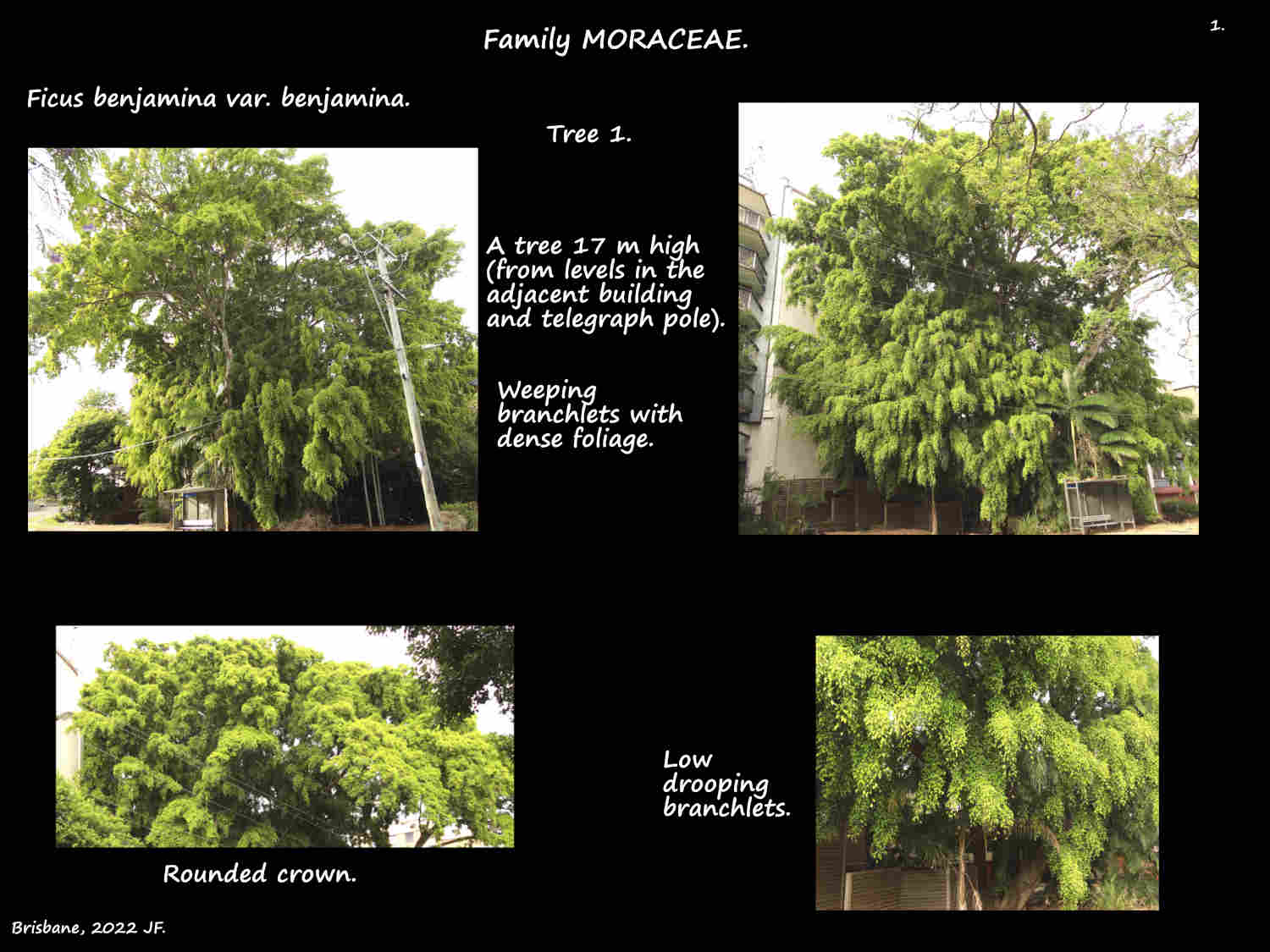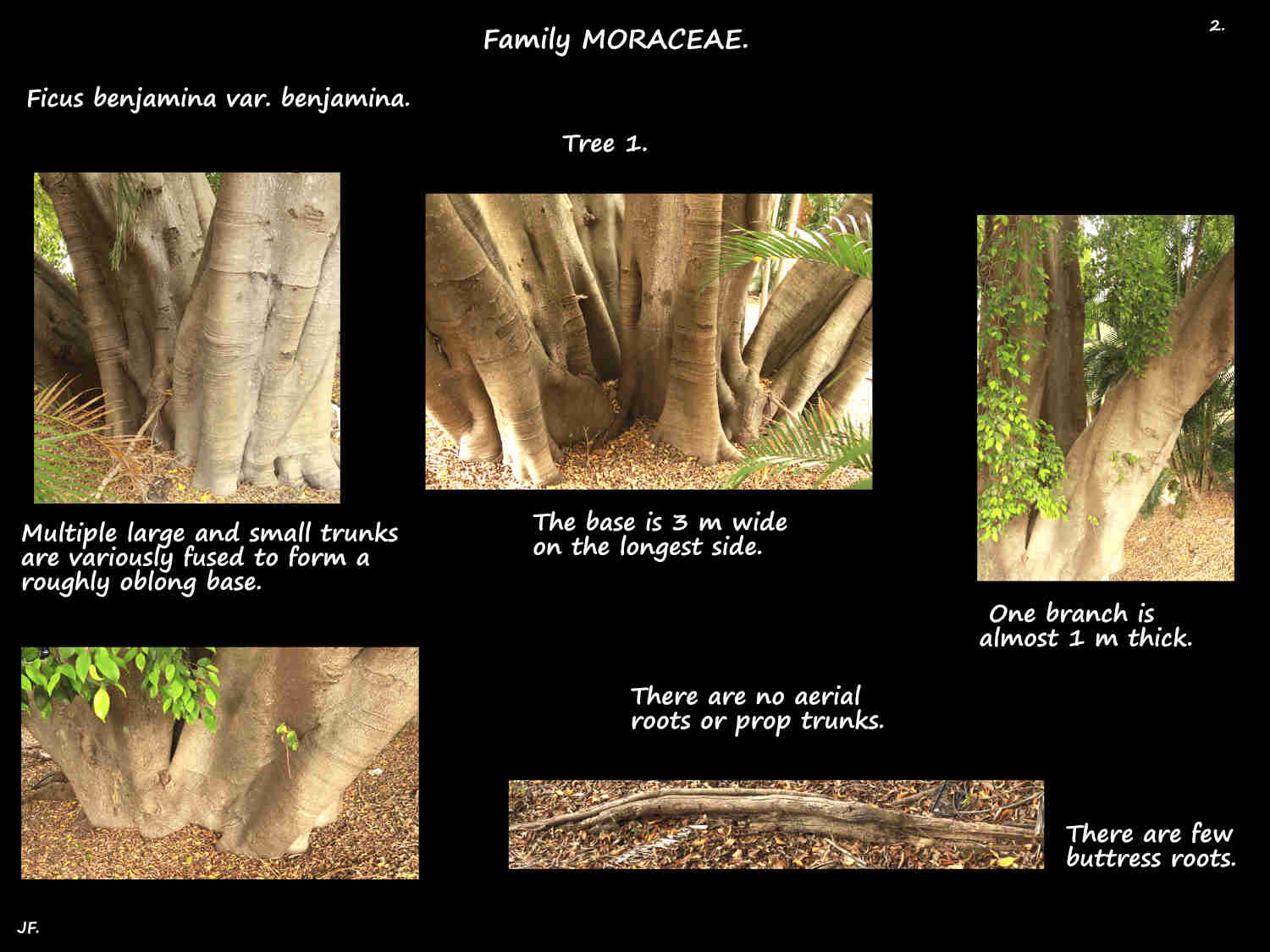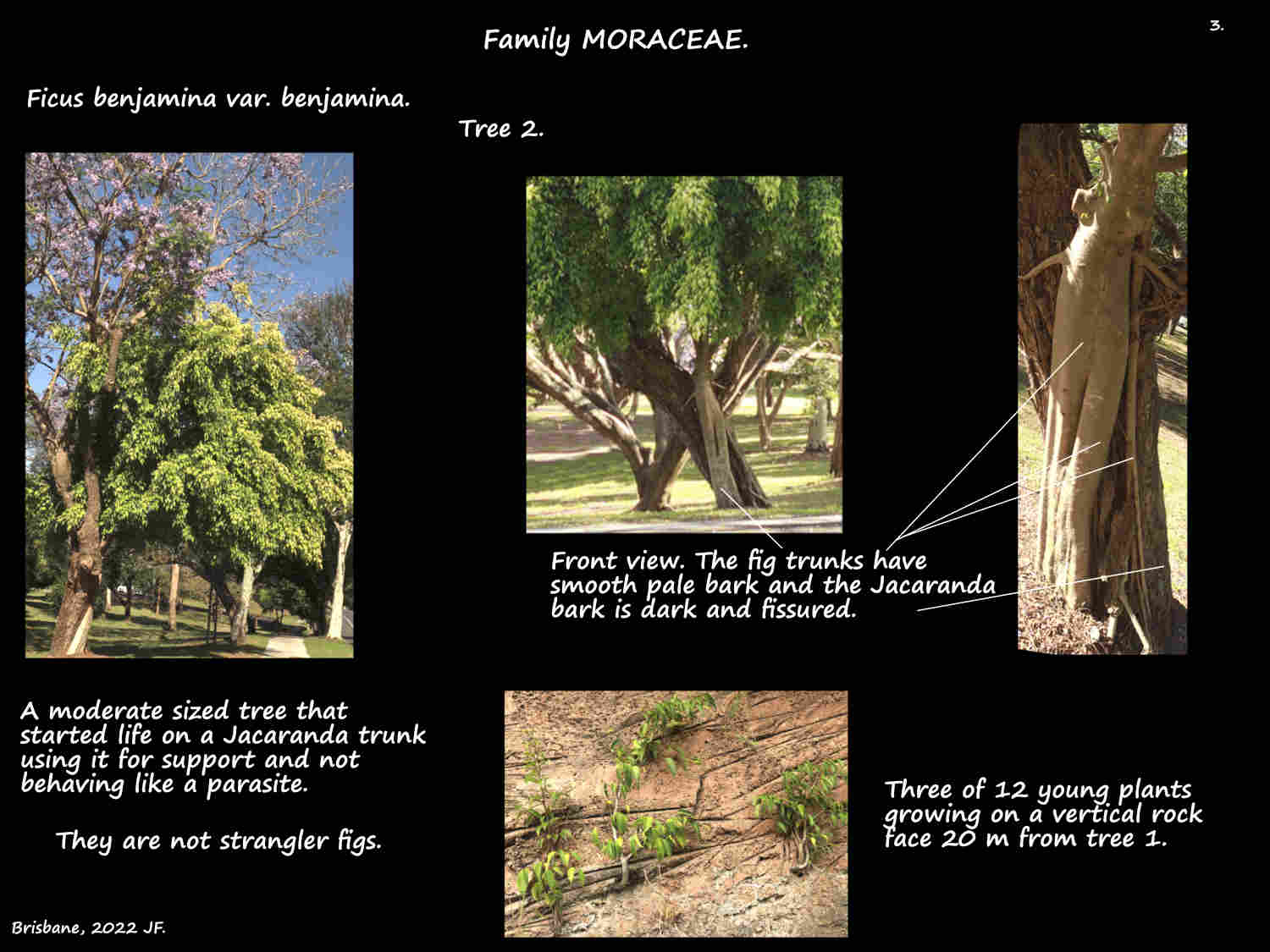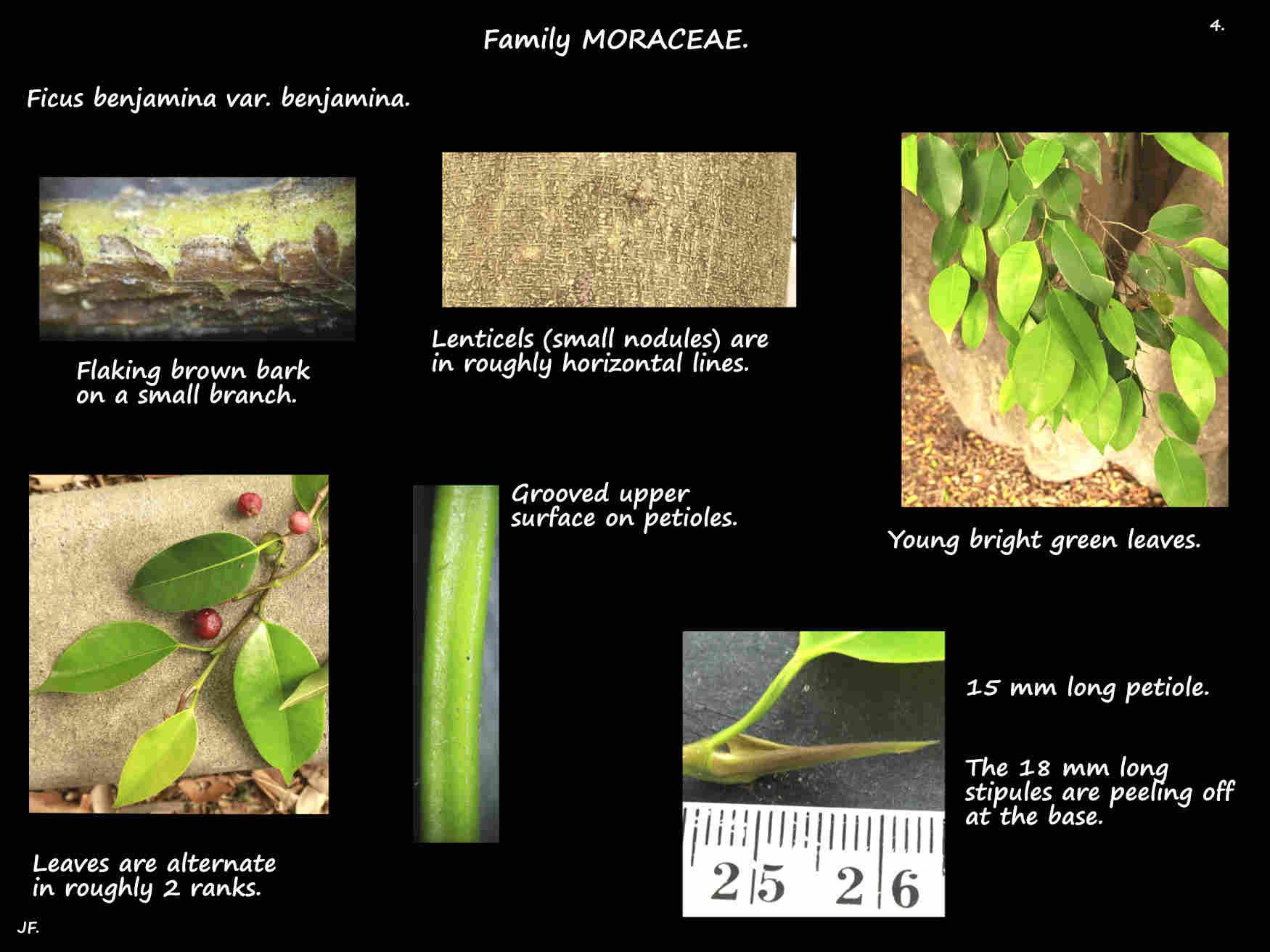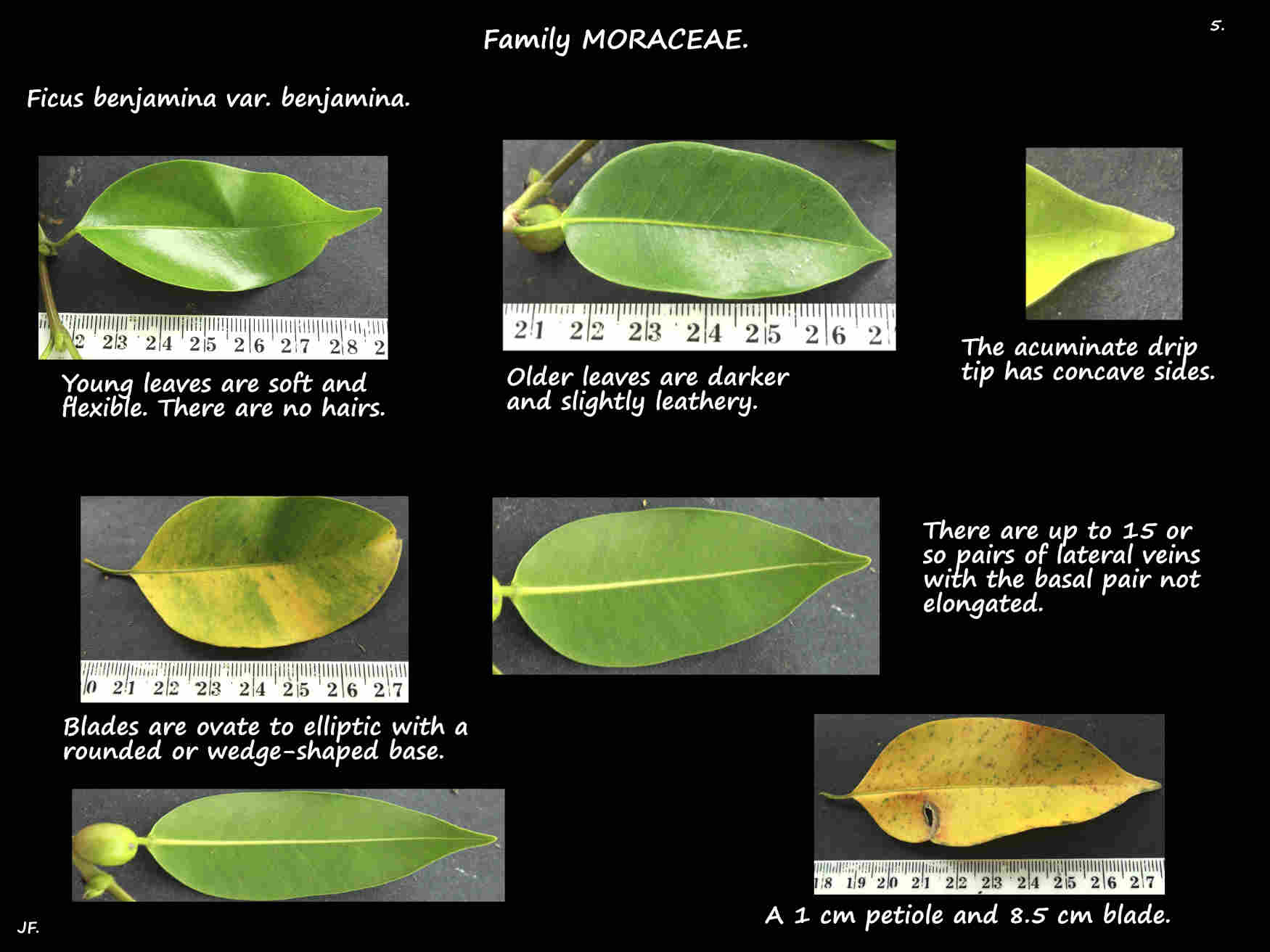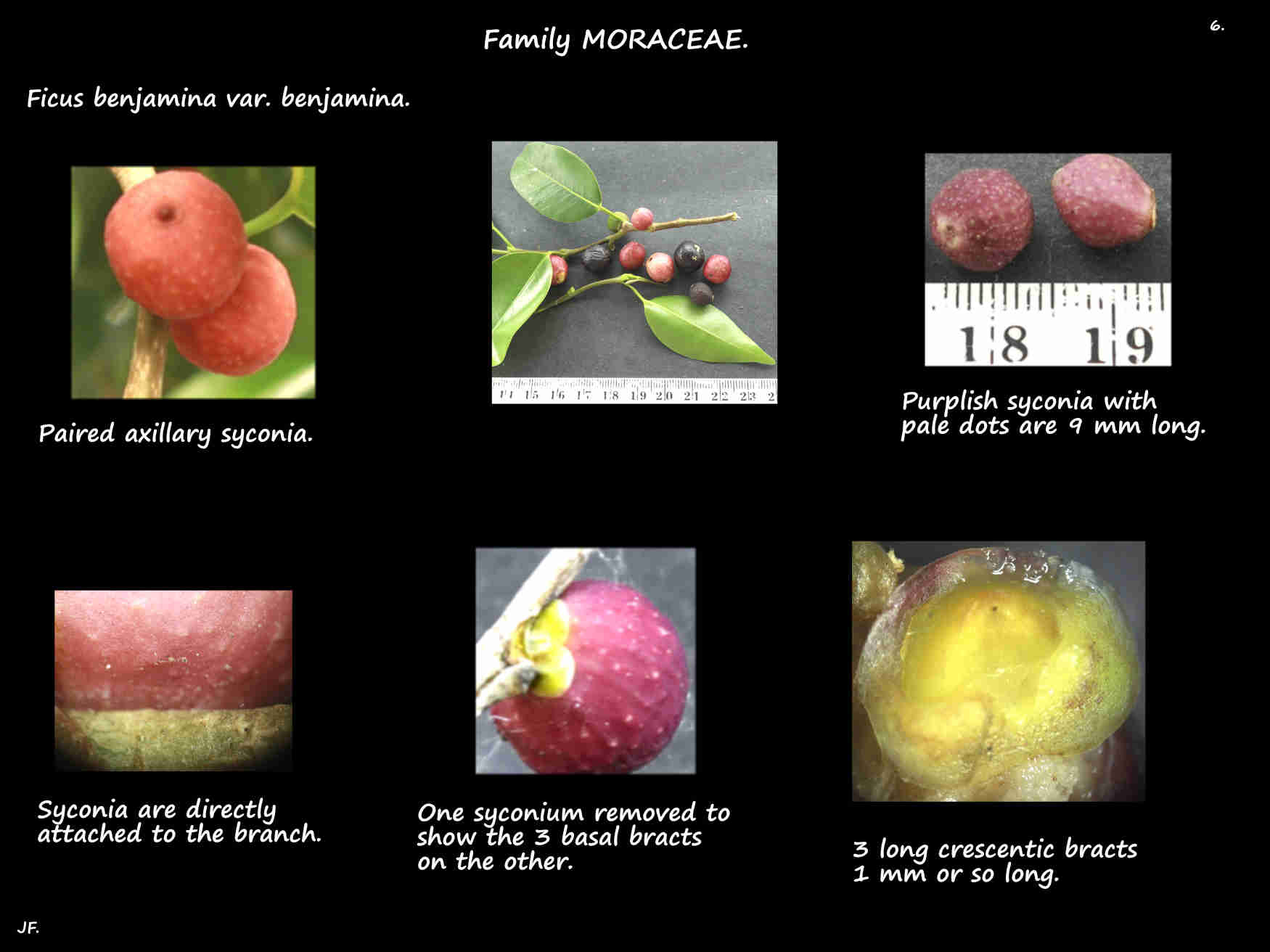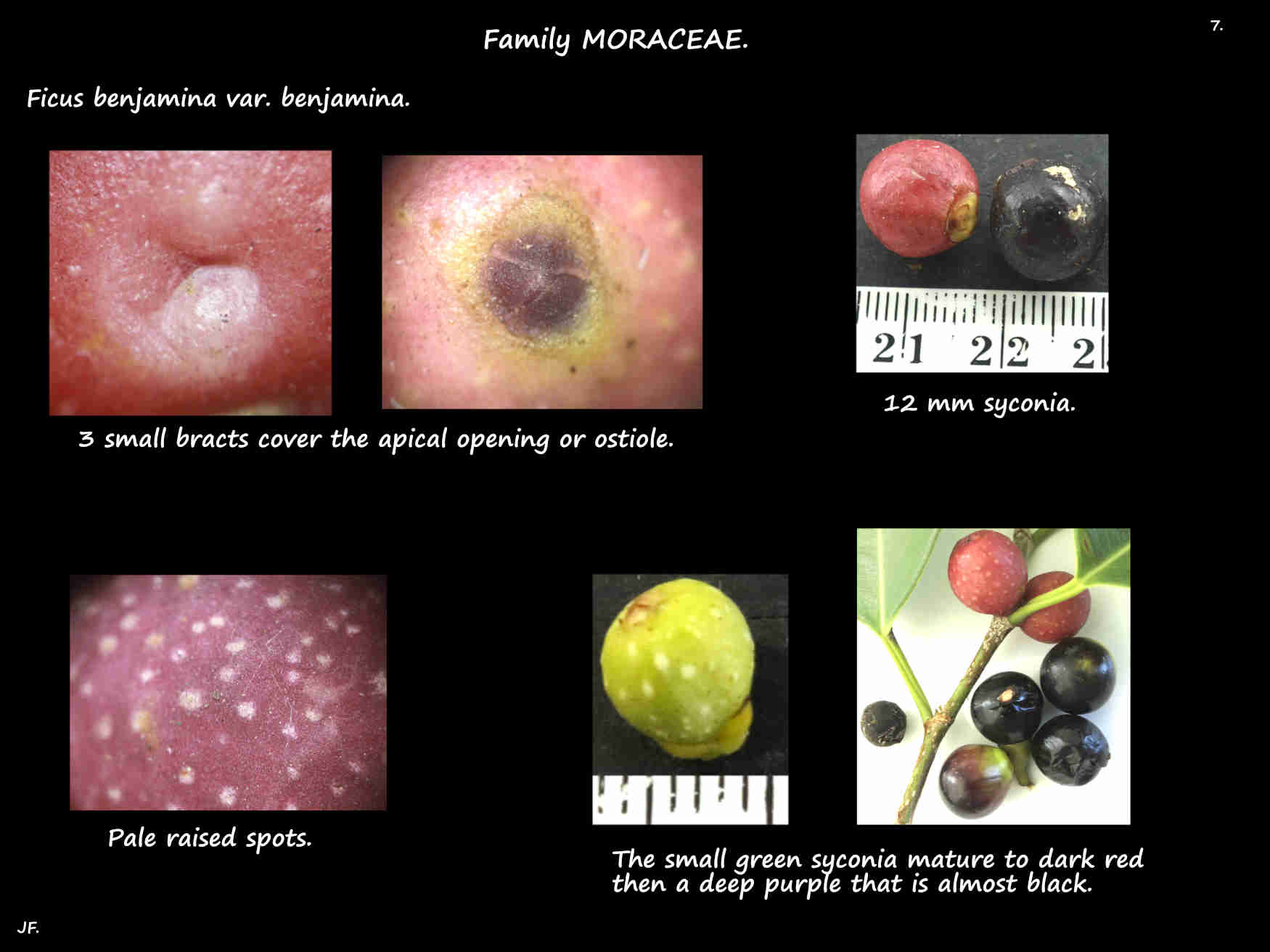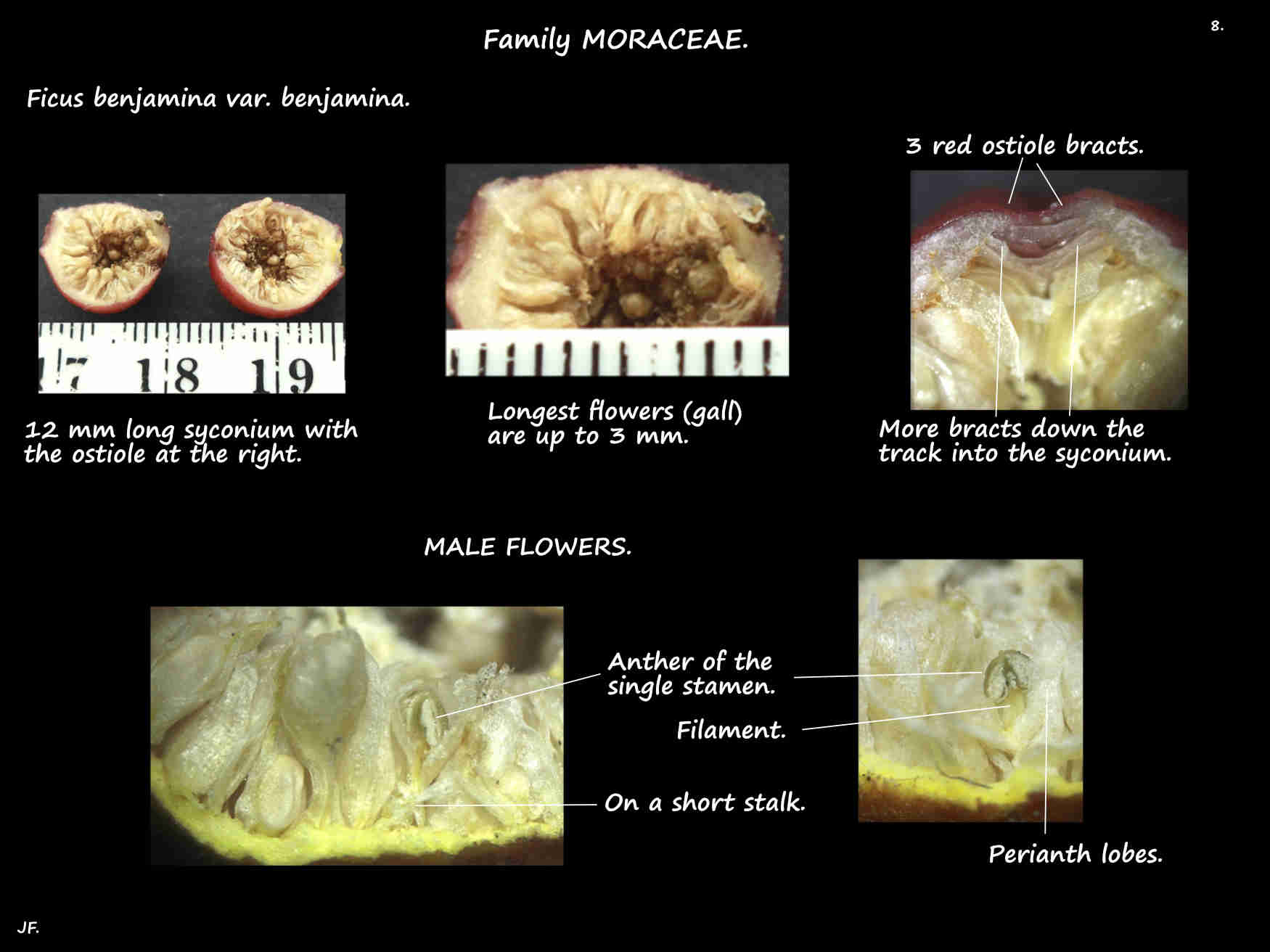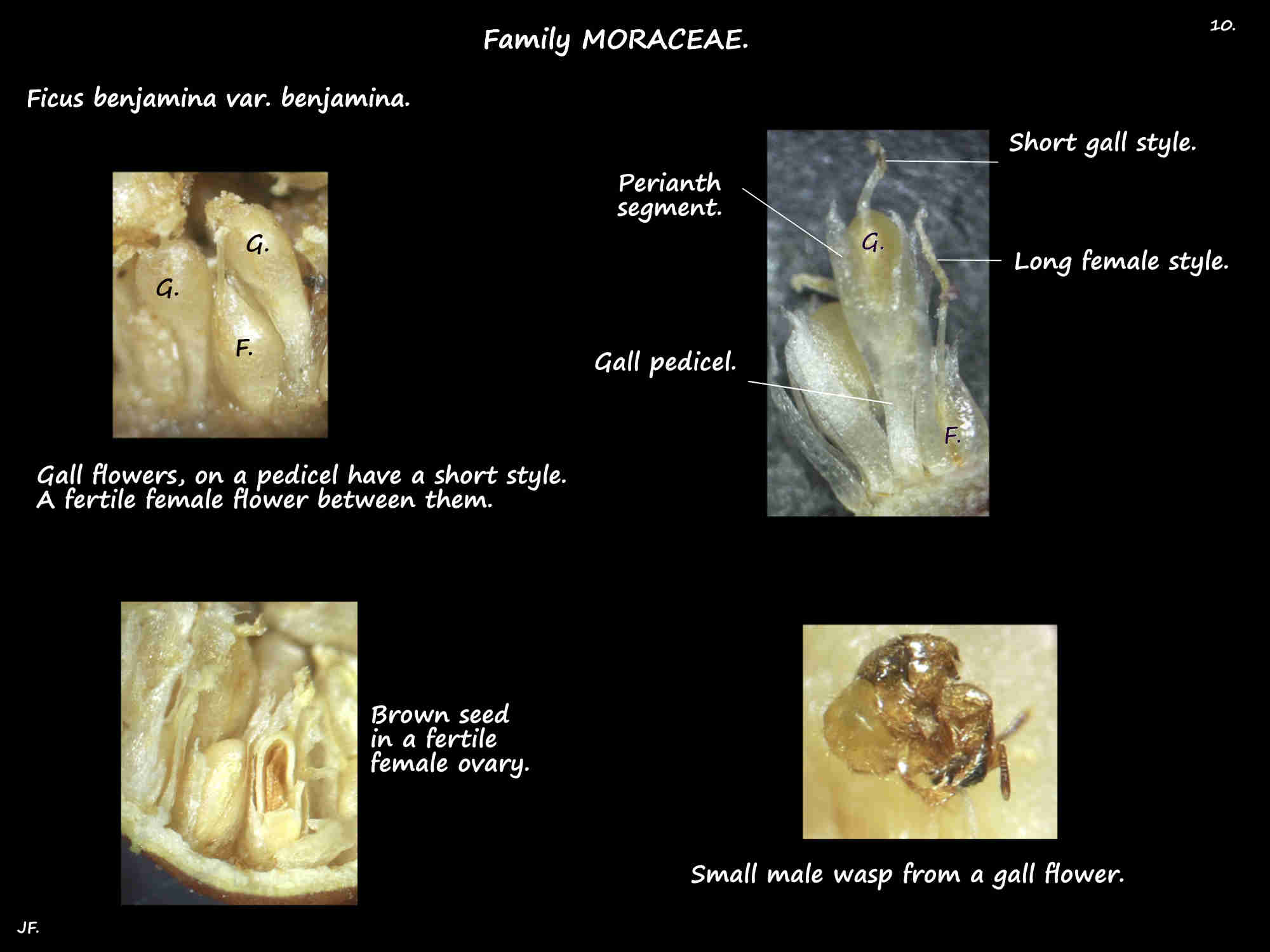Ficus benjamina var. benjamina.
Family Moraceae > Tribe Ficeae > Genus Ficus > Subgenus Urostigma.
The Weeping or Benjamin fig is native to N.E. Queensland and parts of Asia.
Two or three varieties are described but only F. benjamina var. benjamina is seen in Queensland.
The evergreen trees can germinate in the soil or on rocks but they commonly start as a hemi-epiphyte on another tree.
They use the host tree for support but not nourishment.
When their aerial roots reach the ground they root and develop into trunks that may fuse.
They are not true stranglers as they usually do not kill the host.
In the wild they can grow to 30 m high but around the city they are often 10 to 15 m.
The trunk has smooth pale grey bark with lenticels (small nodules) in roughly horizontal lines.
Young branches have brownish bark and no hairs and branches and petioles exude a white latex when damaged.
Once established in the ground it is unusual to see aerial roots from the branches.
The Weeping name comes from the small branches which are pendulous and have dense foliage.
The alternately arranged leaves are roughly in 2 ranks rather than a spiral.
The petiole, around 2.5 (0.5 to 3) cm long has a groove in the upper surface and no hairs.
Each leaf bud is protected by 2 free, leaf-like lance-shaped stipules 1 to 1.5 cm long.
They have no hairs and they fall off as soon as the leaf starts to emerge.
The hairless blades are variable being ovate, lanceolate or elliptic.
They are around 4 to 8 (3 to 12) cm long and 2 to 6 cm wide.
The short drip tip is pointed with the sides just below the tip being concave (acuminate).
The base is rounded or wedge-shaped and the sometimes wavy edge is smooth.
There are up to 15 or so pairs of close parallel lateral veins and the basal pair is not elongated.
Young light green leaves are thin and flexible while mature ones are darker and slightly leathery.
The upper surface is shiny, the lower dull and oil glands are visible on both sides with low magnification.
The axillary syconia, on no stalk (peduncle) are typically in pairs.
They are almost spherical or slightly pear-shaped and around 8 to 12 mm when mature.
The 2 or 3 basal bracts are not visible when the syconium is in situ.
They are shaped like a narrow crescent around 1 mm long.
Often unequal in size they have no hairs and persist into the mature fruit.
At the tip the small opening or ostiole is protected by 3 overlapping bracts around 2 mm wide.
There are more bracts down the sides of the orifice through the fleshy wall.
Each syconium has scattered unisexual male and female flowers plus sterile female gall flowers.
There are no hairs between the flowers.
Male flowers, on a short stalk have (3) 4 free widely ovate calyx lobes.
The filament of the single stamen holds the anther beyond the calyx lobes.
The fertile female flowers, on no stalk have 3 or 4 free calyx lobes.
The ovoid ovary, with one ovule has a slightly lateral style with a hairy stigma.
The sterile gall flowers, in which the pollinating wasp lays her eggs, are similar to the fertile females
except they are on a stalk and have a shorter style.
Mature fruit are roughly spherical hairless figs.
They ripen from green to yellow then orange, dark red and a deep purple sometimes with pale raised dots.
As there are fruit on the tree for most of the year figs of all colours can usually be seen.
Each fertile female ovary can develop into an achene with a kidney-shaped seed.
There are numerous cultivars with the variegated form being common.
Another is Ficus benjamina ‘Nuda’ with wide spreading branches and orange fruit.
J.F.

